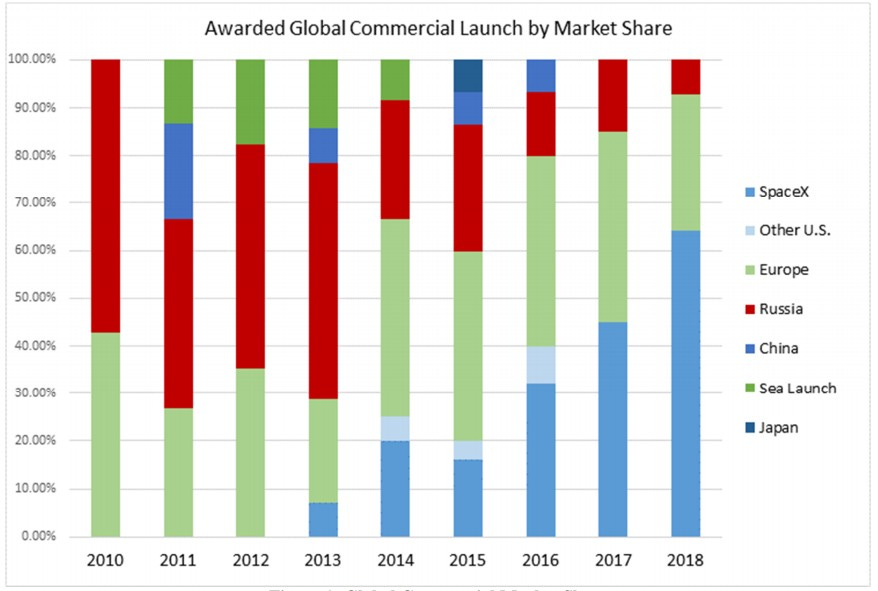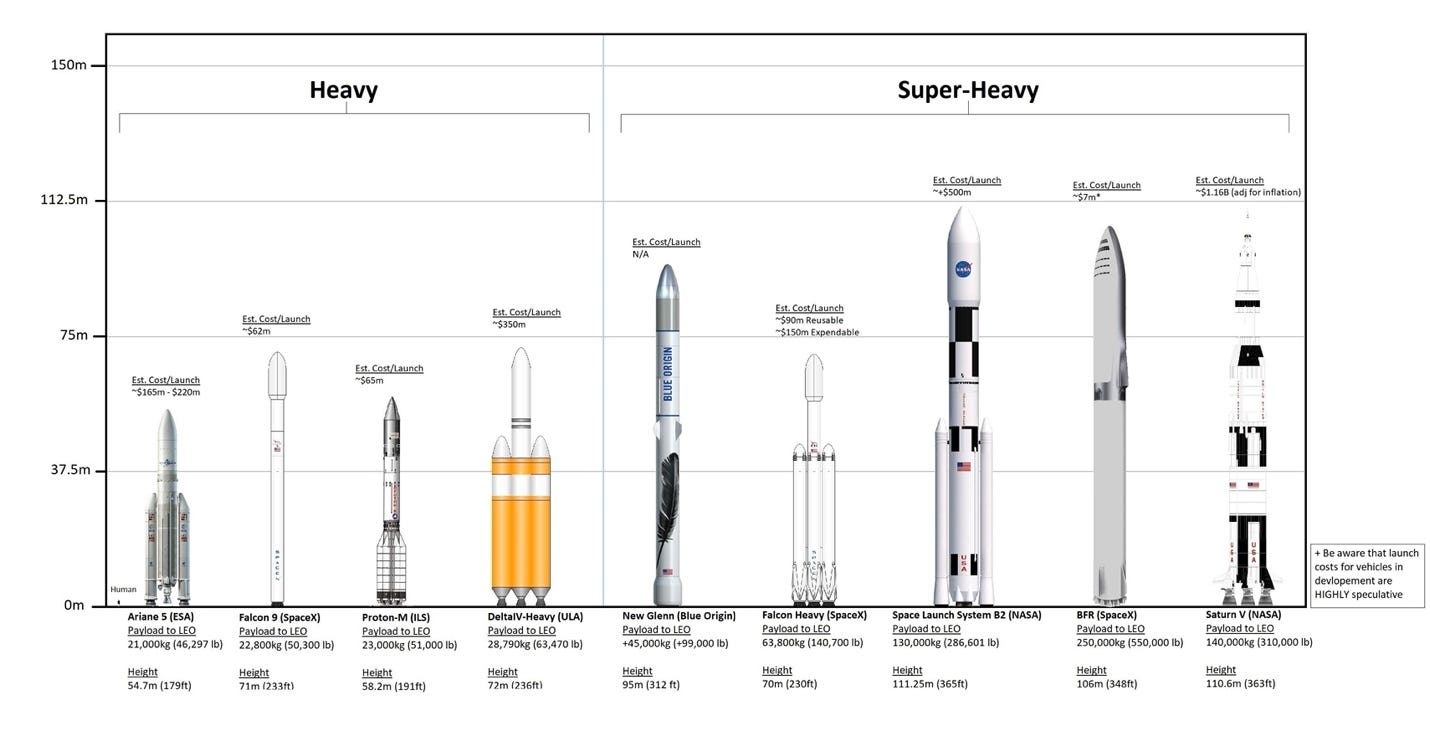The Great Moon Rocket Boondoggle
Publicly funded space exploration is a great thing, but the Space Launch System (SLS) is not the way to do it
Tl;dr
· Space exploration and public funding for space exploration is important
· Reusable rockets have disrupted the space launch industry and have dramatically lowered launch costs
· The SLS rocket used to fly Artemis 1 uses old technology, is not reusable, and is very expensive
· There will be a taxpayer backlash to SLS that will harm space exploration
· Artemis launch contracts should be re-bid to select reusable rockets
Author’s note: the Russo-Ukrainian War series will return, but Ad Astra had to discuss this moon rocket
The Need for Space Exploration
Ask anyone who knows me and they’ll tell you I’m a huge space nerd. I went to Space Camp (at the Kansas Cosmosphere). Twice. I worked at the private space flight company Blue Origin. And I went to the (scrubbed) launch of Artemis 1 in Cape Canaveral, FL back in August. So I’m a huge advocate of space exploration in general and public support for space exploration in particular. I think the Apollo moon landing was probably the greatest event in US history.
Especially now, in a particularly gloomy period of human history, we need space exploration to inspire us. To me, the Demo-2 mission by SpaceX in May 2020 that took two American astronauts to the International Space Station was a bright spot in an otherwise awful year (shown in Return to Space). But today’s launch of Artemis 1 on a $23 billion[i] (and counting) technologically-obsolete rocket is not the way to do it. At $4.1 billion per launch[ii] and a program cost of $93 billion through 2025[iii], the taxpayers are not going to be pleased when they learn the price tag and the ensuing backlash will harm human space exploration.
The Economics of Space Flight
The space business is all about reducing the cost per unit of mass delivered to orbit. For decades, space vehicles were used once (non-reusable). Rockets were junked in the ocean after launch and the cost of space access was so high that only nation-states could go. This would be like discarding the airplane after every time you flew. Commercial airline tickets would be very expensive.
Then private companies like Space X and Blue Origin disrupted the industry with reusable rockets that could be launched, landed, and re-used, dramatically lowering cost of launch per unit of mass. The total cost of the space vehicle could be spread out over multiple flights, like how a hundred-plus million-dollar airliner spreads its costs over millions of flights so your ticket is still affordable.
Figure 1: Twin cores from the first Space X Falcon Heavy launch. Note this is real-life, not CGI.
Space X in particular mastered this and lowered costs to tens of millions per launch to customers in the satellite industry, versus hundreds of millions per launch charged by their non-reusable competitors. They gained more than half of the market in five years and now even fly astronauts to space.
Figure 2: Market share of the space launch industry[iv]
Artemis Program Overview
Artemis (Apollo’s sister in Greek mythology) is NASA’s program to return humans to the moon. The SLS is the rocket selected by NASA to fly Artemis missions. The SLS is made by several defense contractors, principally Boeing, Lockheed Martin, Aerojet Rocketdyne and Northop Grumman. Parts of it are made in all 50 states plus Puerto Rico. The Artemis 1 mission launched today is an uncrewed test flight to the moon, Artemis 2 will take humans to lunar orbit in 2024, and Artemis 3 will land humans on the moon in 2025. There are currently eight missions planned on the SLS, including delivering a space station into lunar orbit, and establishing a base on the lunar South Pole.
Work on the SLS began in 2011, coincident with the end of the Space Shuttle program. It was originally supposed to fly in 2016, but after numerous delays today is its first flight. The rocket’s development has cost $23 billion to date and is projected to reach $93 billion by 2025. It is not reusable and is junked after every flight. Its engines are repurposed Space Shuttle engines, which were designed in the 1970s. It also reuses Space Shuttle solid rocket boosters and the external tank.
The SLS program’s cost-overruns have been legendary, even in a defense contracting world known for fiscal cataclysms. An independent audit by the NASA Inspector General in 2021 found that each launch is expected to cost $4.1 billion. This compares to $60 million per launch for the Space X Falcon 9 and is almost 4x the inflation-adjusted $1.2 billion per launch of the Saturn V of the Apollo program in the 1960s.
Figure 3: Comparison of launch vehicles
Backlash
Taxpayers will revolt when they understand the price tag for this program and the fact that it relies on obsolete technology. During the next budgeting season in Washington DC, Democrats and Republicans will agree that it’s a colossal waste of money. And that’s saying something, because they can’t even agree that the sky is blue right now. Lawmakers will cancel or gut the program and that’s bad for human space exploration.
Likewise, the companies who make SLS need to develop reusable rockets or they’ll go extinct like Blockbuster Video. It’s easy to criticize large defense contractors but I happen to think its good for America to have a thriving, large, competitive defense industry. It helps national security by diversifying access to space, it lowers costs for taxpayers, and it provides lots of good manufacturing jobs.
Action Plan
1. Competitively re-bid future Artemis launch contracts based on cost
2. Allow SLS contractors to phase out non-reusable rockets in a way that doesn’t significantly alter the mission timeline or capabilities
The Artemis launch contracts should be re-bid on a competitive basis to include newer operators like Space X and Blue Origin. Contracts should be awarded based on cost, which will naturally result in reusable rockets being selected. Older contractors like Boeing and Lockheed Martin should be given a chance to resubmit bids for reusable rockets so they can develop those capabilities.
Some of the newer space vehicles may not be ready or appropriate for the Artemis missions. For example, the Space X Falcon 9 is not powerful enough for Artemis and the Space X Starship is powerful enough but still in development. Likewise, portions of future SLS vehicles may have already been built and scrapping them now may be a waste. NASA should phase out SLS in a way that doesn’t significantly delay the Artemis program (e.g. 1-2 years delay is OK but a decade delay is not). NASA should be given discretion to optimize this transition.
[i] https://www.extremetech.com/extreme/332275-nasa-auditor-reveals-unsustainable-cost-for-sls-launches
[ii] https://www.cbsnews.com/news/nasa-moon-rocket-artemis-mission/
[iii] https://www.cbsnews.com/news/nasa-moon-rocket-artemis-mission/
[iv] https://arstechnica.com/science/2017/07/as-dominance-of-launch-market-looms-spacex-now-valued-at-21-billion/?comments=1








